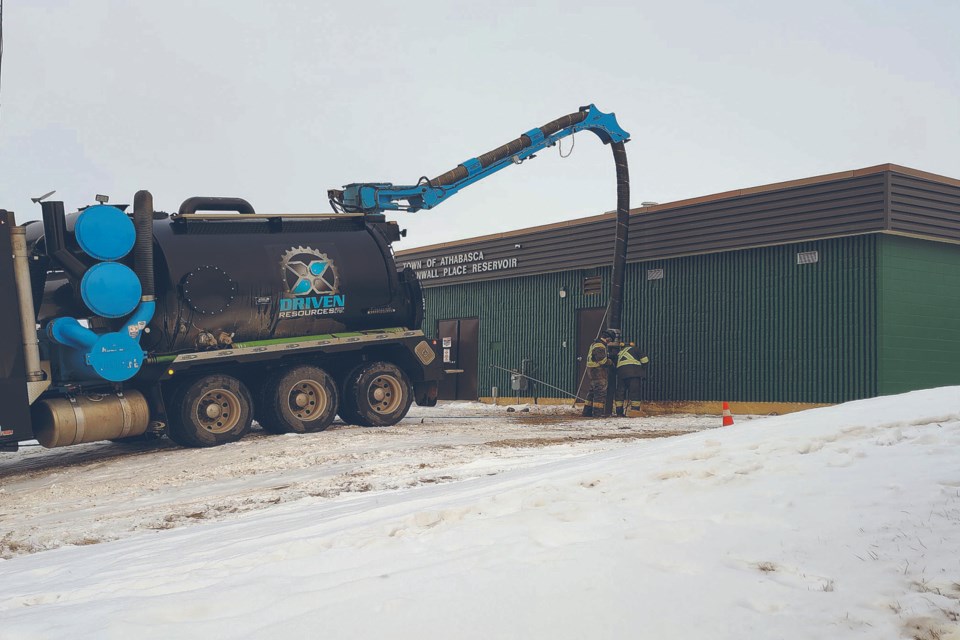ATHABASCA – A leak at one of the town’s water reservoirs last week had the potential to stop the water from flowing to a large part of the community, but it was discovered quickly and repaired with relative ease, averting what could have been a very serious situation.
The Town of Athabasca sent out the notification Thursday morning Nov. 25 saying there was a leak at the Cornwall reservoir and that crews were on site.
“There is a high probability it will cause loss of water pressure, or complete loss of water,” read the notice.
By 4 p.m. an update from the town said the line failure had been isolated and a temporary bypass had been installed on the main line. A third notice sent Friday morning announced the issue had been resolved.
Mayor Rob Balay said Sunday the leak was a result of a small hole, no bigger than the diameter of a pen, in the line running just outside the building. It was small enough that a minimal amount of water escaped into the basement of the building, and it went directly into the dry well, not the reservoir itself.
“We brought a locator in first to make sure we were digging in the right spot because we knew that once it was down, there was potential a big part of town would not have water for a while,” said Balay. “But our awesome public works and utilities crew figured out a way to run a bypass to the closest hydrant, so basically they kept the water on the entire time.”
The town coordinated with staff at the regional water treatment plant, who filled up the Colinton and Boyle reservoirs as quickly as possible, just as a contingency plan in case the repair took longer than expected. Balay said he wasn't aware of any issues with a loss of service, or low pressure.
Crews used a clamp, as they would on any other waterline break, and it was a relatively quick fix, he added, noting the clamps are designed to last 25 years.
The likely cause of the leak, he continued, was probably a two-foot rock that was found right on top of the line where the excavation occurred.
“They found a two-foot rock right on top of it, so whenever that was back-filled 40 years ago, the contractor shouldn't have done things like that, unfortunately that's what happened in this case,” he said.



